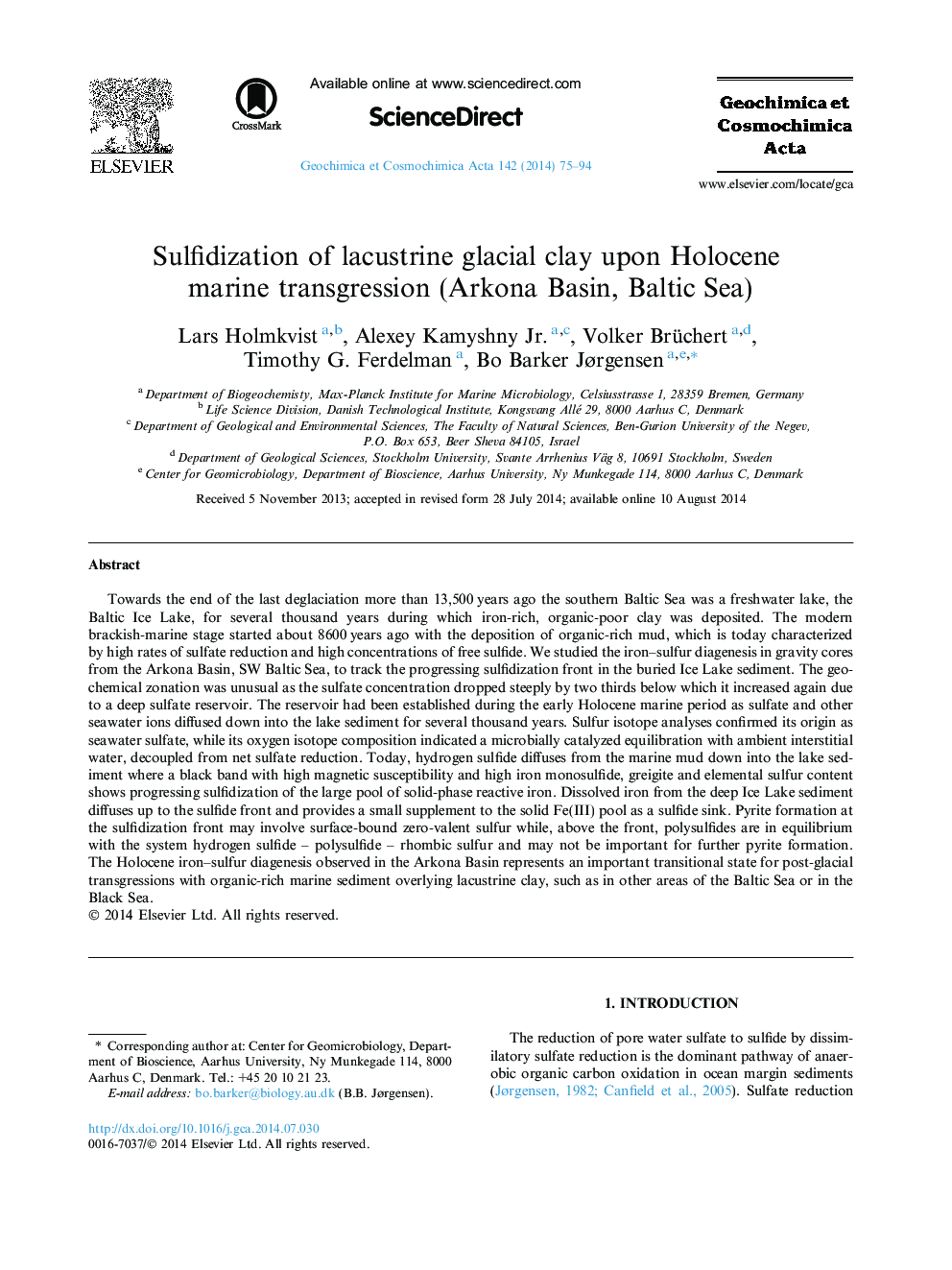| Article ID | Journal | Published Year | Pages | File Type |
|---|---|---|---|---|
| 6438425 | Geochimica et Cosmochimica Acta | 2014 | 20 Pages |
Abstract
Towards the end of the last deglaciation more than 13,500Â years ago the southern Baltic Sea was a freshwater lake, the Baltic Ice Lake, for several thousand years during which iron-rich, organic-poor clay was deposited. The modern brackish-marine stage started about 8600Â years ago with the deposition of organic-rich mud, which is today characterized by high rates of sulfate reduction and high concentrations of free sulfide. We studied the iron-sulfur diagenesis in gravity cores from the Arkona Basin, SW Baltic Sea, to track the progressing sulfidization front in the buried Ice Lake sediment. The geochemical zonation was unusual as the sulfate concentration dropped steeply by two thirds below which it increased again due to a deep sulfate reservoir. The reservoir had been established during the early Holocene marine period as sulfate and other seawater ions diffused down into the lake sediment for several thousand years. Sulfur isotope analyses confirmed its origin as seawater sulfate, while its oxygen isotope composition indicated a microbially catalyzed equilibration with ambient interstitial water, decoupled from net sulfate reduction. Today, hydrogen sulfide diffuses from the marine mud down into the lake sediment where a black band with high magnetic susceptibility and high iron monosulfide, greigite and elemental sulfur content shows progressing sulfidization of the large pool of solid-phase reactive iron. Dissolved iron from the deep Ice Lake sediment diffuses up to the sulfide front and provides a small supplement to the solid Fe(III) pool as a sulfide sink. Pyrite formation at the sulfidization front may involve surface-bound zero-valent sulfur while, above the front, polysulfides are in equilibrium with the system hydrogen sulfide - polysulfide - rhombic sulfur and may not be important for further pyrite formation. The Holocene iron-sulfur diagenesis observed in the Arkona Basin represents an important transitional state for post-glacial transgressions with organic-rich marine sediment overlying lacustrine clay, such as in other areas of the Baltic Sea or in the Black Sea.
Related Topics
Physical Sciences and Engineering
Earth and Planetary Sciences
Geochemistry and Petrology
Authors
Lars Holmkvist, Alexey Jr., Volker Brüchert, Timothy G. Ferdelman, Bo Barker Jørgensen,
